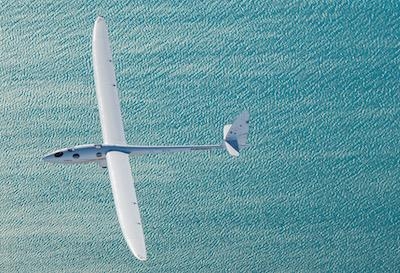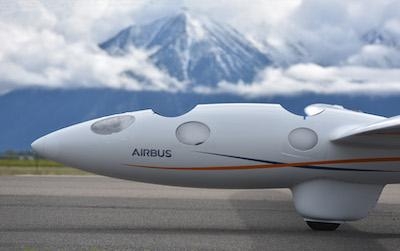Pilots Prep Aircraft In U.S. With New Equipment, Prepare For Fourth Season
Airbus Perlan Mission II officially launched its fourth season of operations with a press briefing this week at Minden-Tahoe Municipal Airport, the year-round home of the Perlan 2 glider, the world’s first engineless aircraft designed to reach the edge of space. When the aircraft deploys to Patagonia later this year, the team aims to achieve the world altitude aviation record for sustained, level flight.

Last year, on Sept. 2, 2018, the Airbus Perlan Mission II team set a new world record of 76,124 feet pressure altitude, surpassing the highest known flight of the U-2 spy plane (74,000 feet). This year, the team wants to soar the Perlan 2 space glider up to its maximum altitude of 90,000 feet, surpassing the only other wingborne aircraft to fly that high above earth’s atmosphere – the SR71 Blackbird. Unlike the mighty Blackbird, which flew to over 84,000 feet, the Perlan 2 space glider has no engine, and uses only the power of the wind in the stratosphere to soar.
“We’re excited to be supporting this courageous group of aviation pioneers, whose passion and drive for innovation really epitomizes the spirit we try to instill in everyone at Airbus,” said C. Jeffrey Knittel, chairman and CEO of Airbus Americas, title sponsor of the non-profit project. “We look forward to the contributions to our industry that this project will make this year, and are proud to have our name on such a history-making aircraft.”
Perlan pilots briefed media on key technological innovations and improvements that the Airbus Perlan Mission II team has made to the aircraft since its last season. The aircraft’s impressive capabilities include a visualization system for seeing rising air currents in the cockpit; spacecraft-capable oxygen rebreathers; a drogue parachute to allow rapid descent in case of emergency; and a ballistic chute for a lower-altitude emergency descent.

The glider’s true flight speed at its maximum altitude of 90,000 feet will be almost 400 miles per hour, even without an engine. A passive pressurization system protects the crew in an environment where the air density is less than two percent of what it is at sea level.
The Perlan 2 glider will begin its two-month shipping voyage to Argentina in June, and by the end of July the Airbus Perlan Mission II team will have relocated its operations to the Patagonian town of El Calafate. Atmospheric conditions in this region allow the team to soar into the stratosphere on rising air currents, yielding new discoveries in aviation engineering, extreme weather and space exploration.
The public can follow the adventures of Airbus Perlan Mission II starting this summer via its Virtual Cockpit. Sign up for alerts at PerlanProject.org/contact or in the U.S. text “Perlan” to 57682. Follow the project on social media @PerlanProject on Facebook and Twitter and @AirbusInTheUS on Twitter.
(Images provided with Airbus news release)
 ANN's Daily Aero-Term (11.29.25): Waypoint
ANN's Daily Aero-Term (11.29.25): Waypoint ANN's Daily Aero-Linx (11.29.25)
ANN's Daily Aero-Linx (11.29.25) NTSB Prelim: Jabiru USA Sport Aircraft LLC J230-SP
NTSB Prelim: Jabiru USA Sport Aircraft LLC J230-SP Classic Aero-TV: Crafting The Future of eVTOL Infrastructure
Classic Aero-TV: Crafting The Future of eVTOL Infrastructure Klyde Morris (11.28.25)
Klyde Morris (11.28.25)




